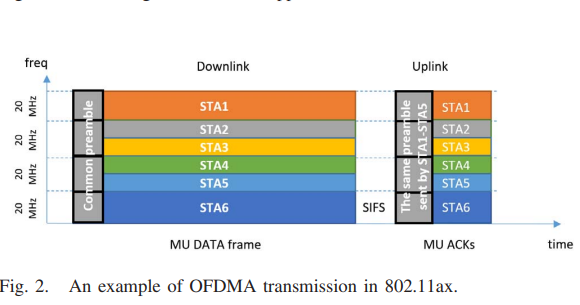The next evolution of the WLAN standard after 802.11ac is the 802.11ax standard. In the meantime WiFi Org has adopted a new nomenclature of naming different standards by a WIFI number. Hence, 802.11ac became WiFi 5 and 802.11ax is termed WiFi 6. WiFi 6 includes the 2.4 GHz and 5 GHz band operation. A new 6 GHz band has also been introduced in the new 802.11ax standard and it is named as WiFi 6e. Wifi 6e includes 2.4 GHz, 5 GHz and 6 GHz operation making it a Tri-band WiFi System
802.11ax standard was developed to address channel utilization issues in 802.11. 802.11 is a half-duplex communication system. Along-with being a half-duplex system, 802.11 employs CSMA/CA where CA stands for collision avoidance. Collision avoidance is chosen because in a wireless media it is not possible to know which station is currently transmitting. The station wishing to transmit actively listens to wireless transmissions over the air to make sure the air medium is idle and later transmits its own packet.
Since 802.11 is a “listen before speak” kind of a system, as the number of stations in an 802.11 BSS increases, contention between stations to transmit also increases exponentially. This leads to severe degradation of network throughput and increase in latency.
In order to address the above, 802.11ax moved to an LTE like OFDMA system. However, LTE is a time based system wherein the 802.11ax system is a frame based system. That is, a multi-user frame in 802.11ax contains data to/from different users and various tones are assigned to the users for the entire frame duration. The below diagram shows that depiction

FIG Courtesy: https://ieeexplore.ieee.org/stamp/stamp.jsp?arnumber=8468986
In addition to the change in PHY layer operation, numerous other advancements and modifications to improve latency, co-channel interference, power save etc were also introduced.
We shall attempt to look and understand some of the features of 802.11ax in the coming articles
Pingback: Security Association (SA) Teardown Protection – Part 2 | Hitch Hiker's Guide to Learning
Pingback: Major PHY related changes in WiFi 6 | Hitch Hiker's Guide to Learning